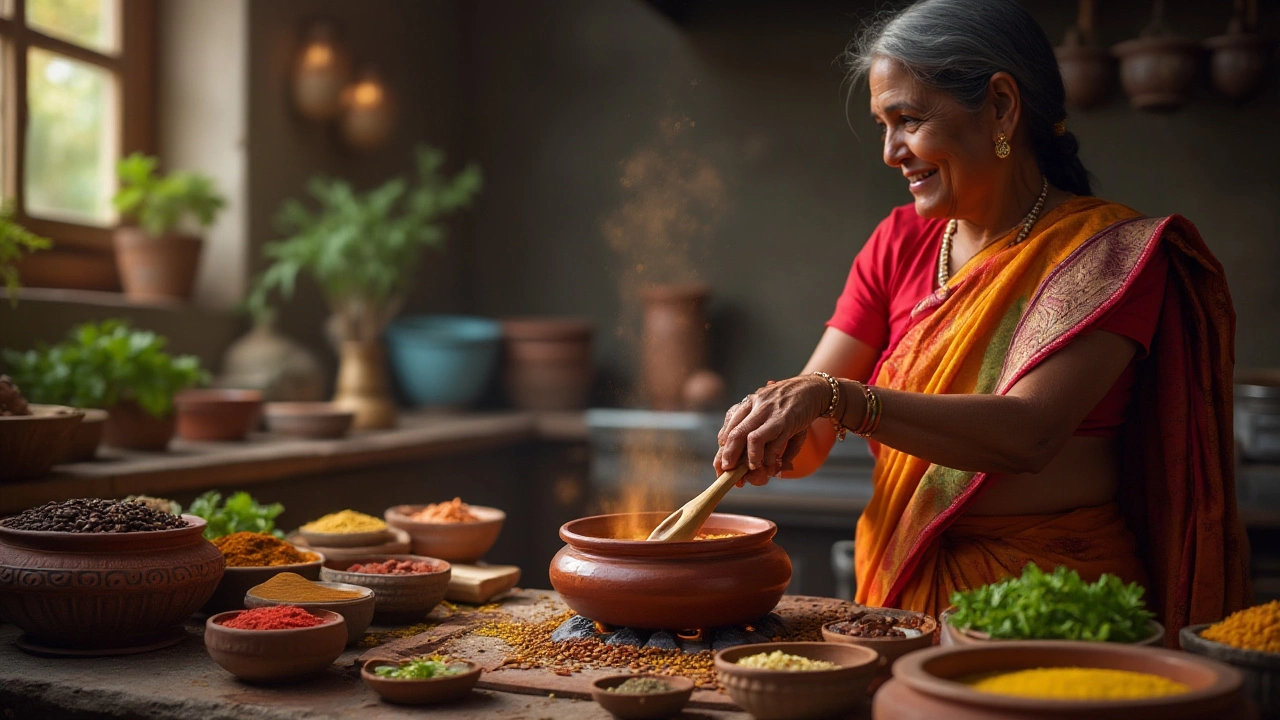Dal in English – What It Means and How to Talk About It
If you’ve ever opened a grocery aisle for “dal” and wondered what English speakers call it, you’re not alone. Dal is the generic Indian term for split or whole lentils, peas, and beans that have been hulled and often cooked into a thick stew. In English you’ll usually see it labeled as “lentils,” “split peas,” or simply “dal” on the pack, but the name can change depending on the variety.
Common English Names for Different Types of Dal
Here’s a quick cheat‑sheet. When you see “toor dal” it’s split pigeon peas – think “yellow split peas.” “Masoor dal” is red lentils, the small orange ones that cook fast. “Moong dal” comes from split mung beans, often called “green gram” in English. “Urad dal” is black gram; split it becomes “black lentils” or “split black gram.” And “chana dal” is split chickpeas, usually listed as “chickpea flour” or just “chickpeas” when whole.
How to Use Dal in Everyday Cooking
Cooking dal is simple. Rinse the lentils, soak if you have time, then boil with water, a pinch of salt, and a splash of oil. Add a tadka—tempered spices like mustard seeds, cumin, garlic, and chilies—for flavor. You can swap the Indian style for a Western twist by tossing in herbs, tomatoes, or broth. The result is a protein‑packed side dish or soup that fits right into salads, wraps, or even burgers.
Many Americans first meet dal in the “Indian” section of the supermarket, where it’s often just called “dal.” If you’re reading a recipe that says “cook dal until soft,” you can replace that with “cook lentils” and the method stays the same. The key is not to overcook; most dal should stay slightly firm, not mushy.
Some readers ask whether “dal” is the same as “lentil soup.” Not quite. Dal is usually thicker, more like a stew, while lentil soup is brothier. Adjust the water ratio to get the consistency you like. If you want a milder taste, add a dollop of yogurt or a splash of coconut milk at the end.
Want to impress friends with a fusion dish? Try mixing cooked dal with roasted veggies and quinoa, drizzle with a lemon‑garlic vinaigrette, and you’ve got a healthy bowl that sounds exotic but is totally approachable.
Curious about how dal fits into American food culture? Our post “What Do Americans Call Dal?” dives into the history of the word, how it showed up on menus, and tips for naming it on your own recipe cards.
Bottom line: dal is just a group of split pulses, and in English you can call them by their specific type—lentils, split peas, chickpeas, or black gram. Knowing the English name helps you shop, follow recipes, and chat with friends about this versatile staple.
Nutrition-wise, dal is a powerhouse. One cup of cooked lentils offers about 18 grams of protein, 15 grams of fiber, and plenty of iron and folate. That makes it a go‑to for vegans and anyone looking to boost their plant protein without reaching for meat.
Storing dal is a breeze. Keep dry, uncooked dal in an airtight container in a cool pantry; it’ll last a year. Cooked dal can be stored in the fridge for 3‑4 days or frozen in portion‑size bags for up to three months. Reheat gently on the stove or in the microwave, adding a splash of water if it looks too thick.
Common mistakes newbies make: rinsing dal once and then loading it into a pressure cooker without enough water, which leads to burnt bits. Also, forgetting to skim off the foam that rises during boiling; that foam can make the dal taste a bit bitter. Lastly, using too much salt early on—salt can toughen the skins, so add it toward the end of cooking.
Experimenting with spices is part of the fun. A pinch of turmeric adds color, cumin gives earthiness, and a dash of garam masala finishes the dish with warmth. If you’re short on time, a ready‑made spice mix works fine; just taste and adjust.
Ready to try dal yourself? Grab a bag of red lentils (masoor dal), rinse, boil with two parts water, add turmeric and salt, and finish with a quick tempering of mustard seeds, garlic, and dried chilies. In under 30 minutes you’ll have a comforting bowl that’s both tasty and nutritious.
Understanding Dal: The English Name and Simple Recipes
This article delves into the English terminology for 'dal,' exploring its significance in cooking. It explains how dal, primarily known as lentils in English, plays a crucial role in Indian cuisine. The article provides insights into simple dal recipes, showcasing the variety and nutritional benefits they offer. With interesting facts and practical cooking tips, readers will gain a better understanding of incorporating dal into their meals.
